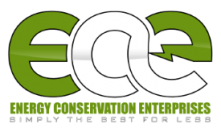Essential Insights for Global Buyers in the Commercial Lighting Sector
Generally speaking, the global buyer vis-a-vis the world of commercial lighting today is standing at crossroads, full of both promise and problems. As the demand for energy-saving products and green design keep growing, comprehending the factors affecting commercial lighting becomes important in assisting with wise buying decisions. Given that businesses are endeavoring toward creating pleasant and productive working environments-the importance of modern lighting scheme installations has never been more paramount. The insight provided by this blog should translate into some key takeaways providing buyers the necessary knowledge to venture into a very complex trade.
It's now an absolute must to keep an eye on technical developments and emerging trends in commercial lighting. From smart-lighting systems to LED technology, global buyers should learn how these innovations can affect costs and functionality in making the right choices. This blog outlines factors worth consideration, trends emerging in the industry, and practical advice that will serve as guidance for buyers into adopting intelligent choices that marry beauty and performance in commercial lighting.

Understanding Market Trends and Innovations in Commercial Lighting
Knowing the market trends and innovations in commercial lighting is vital for global buyers in finding their way in the jungle of buying decisions. Manufactures shift to LED technology, focusing more on sustainable and energy-efficient lighting, as most of the technologies reduce the energy involved and increase the usage life of products. The focus of these changes is the product and investment in researching and developing smart lighting systems compatible with the building management systems. Another issue trend is the smart and connected lighting that people ask for more and more. It is known that with the growing IoT, these modern systems provide motorized lighting services that will enable consumers to control their lights anytime and anywhere. Those systems will be useful for energy efficiency optimization in business premises and also offer a lot of data concerning energy consumption. Additionally, features like occupancy sensors or adaptive lighting will constitute a great source of savings that buyers generally look for while going after return on their investments in lighting. There is also a very particular trend taking place around biophilic design, which has become mainstream in the workspace environments. It has just made people more interested in taking home lighting that imitates natural light patterns so that one has a better setting at his work area, and everyone is comfortable. All the latest technologies in color tunable lighting and circadian rhythm technology use are a representation of this movement, creating healthy indoor environments, boosting productivity, and ensuring optimum use of energy resources. For this reason, it becomes indispensable for buyers in the competitive commercial lighting market to understand the above dynamics.

Key Factors Influencing Purchase Decisions for Global Buyers
Presence at the competitor landscape commercial lighting that looks here globally buyers in many things that influence highly their buying decision. Understanding this factor is extremely important for concrete investment decisions based on current and future needs. A larger consideration here would be energy-efficiency, as many companies would want their joint operational costs reduced and have a smaller environmental footprint. They look more for products that would value to not only meet energy regulations but would provide more in savings while reducing the environmental footprint, taking into consideration future sustainability.
The improvement of technological feats in lighting solutions is another feature that would impel modern buyers towards the smart or technological innovations in the lighting systems. For instance, features like smart lighting systems and their integration with the IoT and adaptive controls among others have opened for modern buyers a wider range of options. Their argument is that modern technologies will continue adding more to the users' experience while improving the energy management initiatives. Therefore, when looking for various products, customers will prefer products with such kind of features.
The price is still a key factor although buyers are adapting to price rises for long lasting, good quality solutions. The total cost of ownership would include all maintenance, energy consumption, and replacement cycles, hence being a major guide to the informed decision-making process. Also, reliability and support services from vendors play an important role as buyers look for partners who will provide unique support in helping them integrate lighting systems seamlessly into their existing infrastructures.
Economically This is all about understanding the market pulse, the technological advances, and their financial implications that will put these buyers in a good position to make their decisions based on ones that would add productivity in their commercial settings.

Sustainability and Energy Efficiency in Commercial Lighting Solutions
They are the essential elements into which a responsible business will, in contemporary times, convert trends in commercial lighting into becoming sustainability and energy efficiency. The demand for adopting sustainable lighting has been rising as businesses increasingly face pressure from customers and regulators regarding environmentally sustainable practices. Products that widely use energy-efficient resources and do not interfere with existing workflows must be made priority by buyers. Installing energy-efficient lighting systems would save businesses quite a fortune in operation, besides improving the heath of our environment.
Probably, one of the most efficient methods for acquiring sustainability in commercial lighting would comprise adoption of LED technology. Compared to other traditional light sources, the present commercially marketed LEDs have a longer lifespan and thus lower energy use compared to other traditional light sources, hence qualifying to be referred to as highly energy efficient. Additionally, incorporating smarter lighting into the control system could improve energy savings by allowing for automated controls and real-time monitoring of energy use, bringing the monitors completely up to the control system. Buyers should hence seek products tailored to fit their provision and possibly even have light settings adjusted according to their needs while optimizing energy consumption.
Another very positive aspect is the material itself. Choosing manufacturers that design energy-efficient lighting products using earth-friendly materials and processes only makes the sustainability profile of a company even richer. Each of these makes it not only recyclable packaging and not toxic materials; every alternative goes to a greener tomorrow. Such efforts would thus align with corporate social responsibility targets while paving the road for unconventionally innovative, cost-effective lighting solutions as global buyers migrate into the commercial lighting territory.

Navigating Supply Chain Challenges in the Lighting Industry
Global supply chain problems in the lighting industry can be better navigated with an understanding of factors affecting production and distribution. A host of complexities confront global buyers-from raw material sourcing to shipping logistics and timely delivery. One major problem is that commodity price fluctuations have an impact on manufacturing costs, which can be direct. Buyers should develop strong relationships with manufacturers and suppliers to secure negotiating leverage and reduce risks arising from price fluctuations.
Geopolitical tensions and trade regulations seem to add even more disruption to the supply chain. With tariffs and restrictions being imposed by various countries, it becomes paramount for buyers to keep abreast of the ever-changing landscape. Diversifying the supplier base is one of the strategies through which companies can minimize risks associated with over-dependence on a sole manufacturer or region. Such diversification can also help in keeping costs down while providing undue advantages in resisting sudden changes in the market.
Continuing with the sustainability theme, this too has gained ample attention in the lighting industry. Buyers are considering the environmental impact of their decisions more than ever. Therefore, in order to counter this dilemma, supportive suppliers who are committed to sustainable processes should be put highest on the agenda of the business. This will help to create a more responsible supply chain and satisfy consumer demand for sustainable products with increased efficacy. By accepting new technologies, for instance, smart inventory systems, the sector may find even more efficiency within its operations and the supply chains upon which it depends as markets change often.
Evaluating Quality Standards and Certifications in Global Markets
In the fast changing environment of commercial luminaries, understanding the quality standards and specifications is of extreme importance for worldwide buyers. As markets become connected further, the amount one must pay attention to some specific quality standards is tremendous. Buyers must know that different areas and countries maintain different requirements which may affect the product's suitability, safety, and performance.
In that sense, one needs a complete understanding of the multitude of certifications that are relevant to each particular market. For example, a must-have indicator of quality and energy efficiency for North America is generally UL and Energy Star certification, whereas a European buyer will most likely search for a CE marking that ensures that the product meets the safety and environmental protection requirements for Europe. Knowledge of these certifications not only allows buyers to select the right kind of product; it also minimizes risks associated with market entry as well as compliance.
Further, adherence to international quality standards such as ISO standards can provide an additional layer of comfort. It is also simply a matter of the perception of shoppers regarding product input. In most cases, shoppers will easily believe that a company is selling quality products just because it complies with these internationally recognized standards. The time that global buyers spend visiting the standards and certifications for different suppliers offers them the right inputs to make informed decisions about superior product performance and enhanced operational efficiency.
